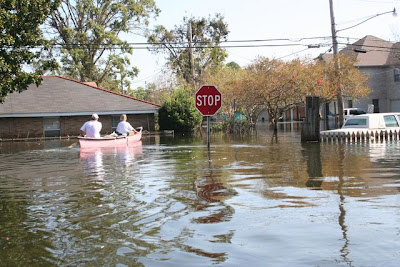by Tiffiny Carlson
I don�t know about you, but it�s been hard watching Hurricane Sandy on the news. Right now, there are thousands of people waiting in line waiting for gas and the power still hasn�t been turned back on for millions. How are people with disabilities getting by? This is the perfect time to talk about emergency preparedness for people with disabilities.
Get Informed
First up, get yourself informed. Do you know the natural disasters possible where you live? Wildfires, blizzards, floods, tsunamis, earthquakes, hurricanes, tornados, heat waves, landslides. Knowing what to be prepared for is your first step (and don�t forget about the possibility of terrorism, chemical emergencies, power outages and fires from other causes).
After you�ve identified possible disasters, next, see what the emergency personnel plan is for people with disabilities at the office of emergency services in your area, your local fire department and other government agencies and non-profit groups. It�s best to know this information long before you actually need it. And make sure you register and tell them about your needs (so they can quickly assist you during an emergency). Also, make sure the emergency shelter in your area are accessible.
And you should also find out how updates on disasters are shared with the public. You can sign up for FEMA RSS Feeds or emergency emails and text messages from your local government alert system to get important information sent to your cell phone. And having a battery-powered radio (with plenty of extra batteries on hand) is a must for receiving disaster updates.
Also, make sure you have a paper list of all contacts (personal and emergency). Your cell battery may die, leaving you without access to your address book.
Create a Go Bag and Ready Kit
The Red Cross and FEMA recommend creating both a Go Bag and a Ready Kit, so you know these are good ideas. A Go Bag is if you need to leave your home immediately, and contains the essentials. A Ready Kit however should sustain you for at least 72 hours and should have enough food, water and supplies (medical supplies included) for 3 days.
Think about everything you may need: Catheters, medications, even consider getting a backup battery if you use the power wheelchair, and equipment you may need if your chair�s tires need attention. Also, pack an extra phone battery and charger, copies of important documents (your birth certificate, passport and license), a flashlight with extra batteries (your radio should also be in this kit), cash and credit cards, as well as personal hygiene items.
Have a plan ready to go
Long before is the best time to have a �what if� plan in place. Think about what you need to do right away if a disaster strikes. Who will you contact? And make sure you have various ways to do so (email, land line and cells). Next, have a contingency plan if the power shuts down. Some people with disabilities will have a backup power source in their homes if they use a respirator or need their automatic beds. Remember, having a plan in place can reduce stress levels, and help you operate more efficiently when a disaster is happening.
And lastly, create an evacuation plan for your home and place of employment. Do you live in a house or a sky rise? Create a support network for those will help you in case of emergency happens, and if the elevators aren�t operational. Look into evacuation assistive devices, such as putting ramps at emergency exits or getting a sling so you can be carried down several flights of stairs if needed. If you use a power chair, having a manual chair is a must.
It�s never fun thinking about possible disasters (minus Doomsday Preppers who love it of course). But for people with disabilities and all the additional needs we can have, having an emergency preparedness plan in place is one of the smartest things any of us can do.
Have you prepared for a disaster? What tips do you have?
To donate money or to find out how you can help those affected by Hurricane Sandy, visit the American Red Cross website at www.redcross.org.
